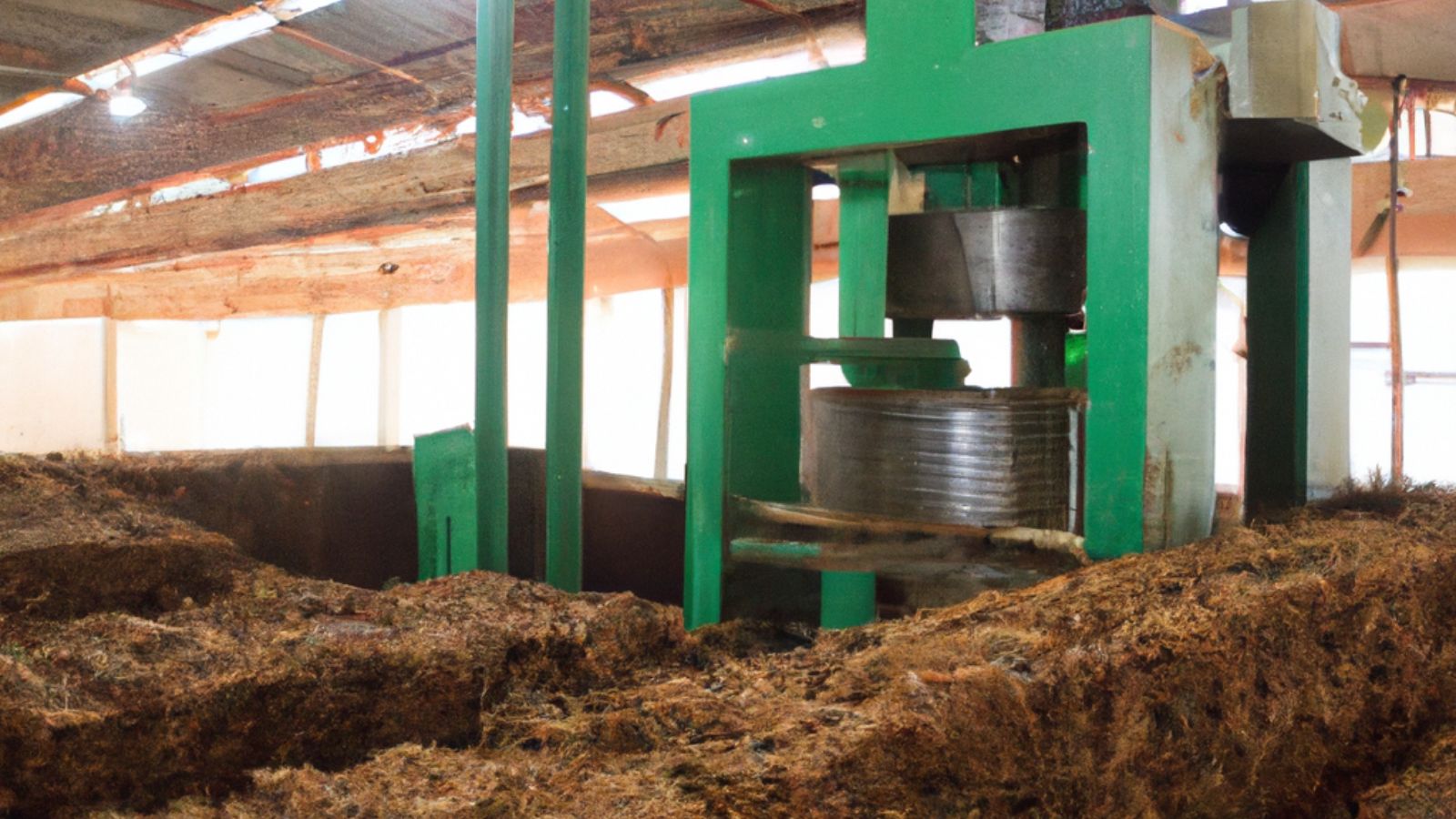
Introduction
Coco peat, also known as coir pith, is a natural, renewable, and environmentally friendly alternative to traditional peat moss. It is a byproduct of the coconut industry and has gained popularity recently due to its sustainability and versatility. Coco peat is widely used as a soil amendment, growing medium, and bedding material in agriculture, horticulture, and landscaping.
The production of coco peat involves processing coconut husks to extract the fibrous material, which is then dried and compressed into blocks or briquettes. Coco peat is made from coconut husks, a waste product of the coconut industry, as opposed to regular peat moss, which is taken from fragile peatlands. This lessens waste and the environmental effects of peat mining, making coco peat a more sustainable choice.
In recent years, several eco-friendly innovations have been introduced in the manufacturing of coco peat to reduce its environmental footprint further. These innovations include sustainable sourcing practices, water conservation techniques, energy-efficient production processes, and recycling and reuse initiatives.
By implementing these practices, manufacturers can help protect the planet while producing high-quality coco peat products.
In this article let us look into 10 eco- friendly innovations in coco peat manufacturing.
Sustainable Sourcing Practices
One key eco-friendly innovation in coco peat manufacturing is the use of sustainable sourcing practices. These involve obtaining coconut husks from farms that have earned organic certification and follow stringent social and environmental guidelines. Growing coconut husks without the use of toxic chemicals lessen the total impact of cocopeat production on the environment.
By supporting these farms, manufacturers promote sustainable agriculture practices and reduce the overall environmental footprint of coco peat production.
Water Conservation Techniques
Water conservation is another important aspect of eco-friendly coco peat manufacturing. Many manufacturers use innovative techniques such as rainwater harvesting and drip irrigation to minimize water usage. Additionally, using water-efficient processing methods helps reduce the overall water footprint of coco peat production.
Drip irrigation directly applies to plant roots, reduces water waste and ensures effective water utilization. These methods help with water conservation efforts in areas where water shortage is becoming an increasing problem and lessen the environmental effect of coco peat production.
Energy-Efficient Production Processes
Reducing the environmental impact of coco peat processing requires energy efficiency. Many businesses invest in energy-efficient machinery and technology to reduce the amount of energy used during manufacturing. This helps to cut production costs overall while also reducing greenhouse gas emissions.
Reducing Carbon Footprint
Reducing the carbon footprint of coco peat manufacturing is a top priority for many manufacturers. One innovative approach is using carbon-neutral production methods, such as using renewable energy like solar or wind power. Additionally, some manufacturers implement carbon offsetting initiatives to compensate for any unavoidable emissions.
Recycling and Reuse Initiatives
Recycling and reuse initiatives are key to making coco peat manufacturing more sustainable. Many manufacturers implement practices such as composting coconut husks after extraction to create nutrient-rich soil amendments. This reduces waste and provides an additional revenue stream for farmers.
Energy-Efficient Production Processes
Innovations in energy-efficient production processes are helping to reduce the carbon footprint of coco peat manufacturing. By reducing energy consumption, manufacturers can lower their greenhouse gas emissions and operating costs, making coco peat production more environmentally sustainable.
Carbon Sequestration Initiatives
To mitigate carbon emissions, some producers of coco peat are putting carbon sequestration programmes into place. This is taking up and storing carbon dioxide from the atmosphere, usually by afforestation or replanting. This aids in mitigating the carbon emissions linked to the production of coco peat and advances international efforts to tackle climate change.
Sustainable Packaging Solutions
Packaging is an essential consideration in eco-friendly coco peat manufacturing. Manufacturers are exploring sustainable packaging solutions such as biodegradable bags, recycled paper packaging, and reusable containers. These sustainable packaging solutions help promote a circular economy and reduce the reliance on single-use plastics.

Biodiversity Conservation Efforts
Coco peat manufacturers are also focusing on biodiversity conservation efforts. This includes protecting and preserving natural habitats, such as wetlands and forests, that are home to diverse plant and animal species. Manufacturers are implementing measures to minimize their impact on these habitats, such as avoiding harmful chemicals and pesticides and restoring degraded ecosystems. By promoting biodiversity conservation, manufacturers can help maintain healthy ecosystems and support the long-term sustainability of coco peat production.
Community Development Programs
Many coco peat manufacturers are implementing community development programs to support local communities. These programs include providing education and training opportunities, supporting small-scale farmers, and investing in regional infrastructure projects. Manufacturers can create positive social impacts by engaging with local communities and building solid and sustainable relationships with those living and working in coco peat-producing regions.
Conclusion
Eco-friendly innovations in coco peat manufacturing are crucial for reducing the environmental impact of this valuable resource. By implementing sustainable sourcing practices, water conservation techniques, energy-efficient production processes, and recycling initiatives, manufacturers can help protect the planet while producing high-quality coco peat products.
Consumers can also play a major role in supporting eco-friendly coco peat manufacturing practices by choosing products from companies that prioritize sustainability, recycling coco peat products after use, and advocating for sustainable practices in the industry.
If you are willing to choose the best coco peat manufacturers ?
Chithu Group is the right place!
Overall, coco peat offers a sustainable alternative to traditional peat moss, and with continued innovation and awareness, its environmental impact can be further minimized, ensuring a greener and more sustainable future for agriculture and horticulture.
FAQs
1.What makes coco peat a sustainable alternative to traditional peat moss?
Coco peat is the right alternative to traditional peat moss because it is made from the renewable resource of coconut husks, which would otherwise be discarded as waste. Additionally, coco peat is pH-neutral, unlike peat moss, which is acidic and can harm the environment.
2.How does coco peat help conserve water?
Coco peat has excellent water retention properties, meaning it can hold moisture for longer periods than traditional soil. This helps save water by lowering the requirement for regular irrigation.
3.How can coco peat production reduce carbon emissions?
Energy-efficient manufacturing techniques and the use of renewable energy sources like wind power and solar and carbon offsetting programmes can all help minimize carbon emissions associated with the manufacture of coco peat.
4.Are there any drawbacks to using coco peat?
While coco peat is a sustainable alternative to traditional peat moss, it does have some drawbacks. For example, it can be more expensive than traditional soil amendments and may require additional fertilization due to its low nutrient content.
5.How can consumers support eco-friendly coco peat manufacturing practices?
By supporting businesses that prioritize sustainability, recycling items that include coco peat after use, and pushing for industry adoption of sustainable techniques, consumers can help ensure that coco peat is manufactured in an environmentally gentle manner.
